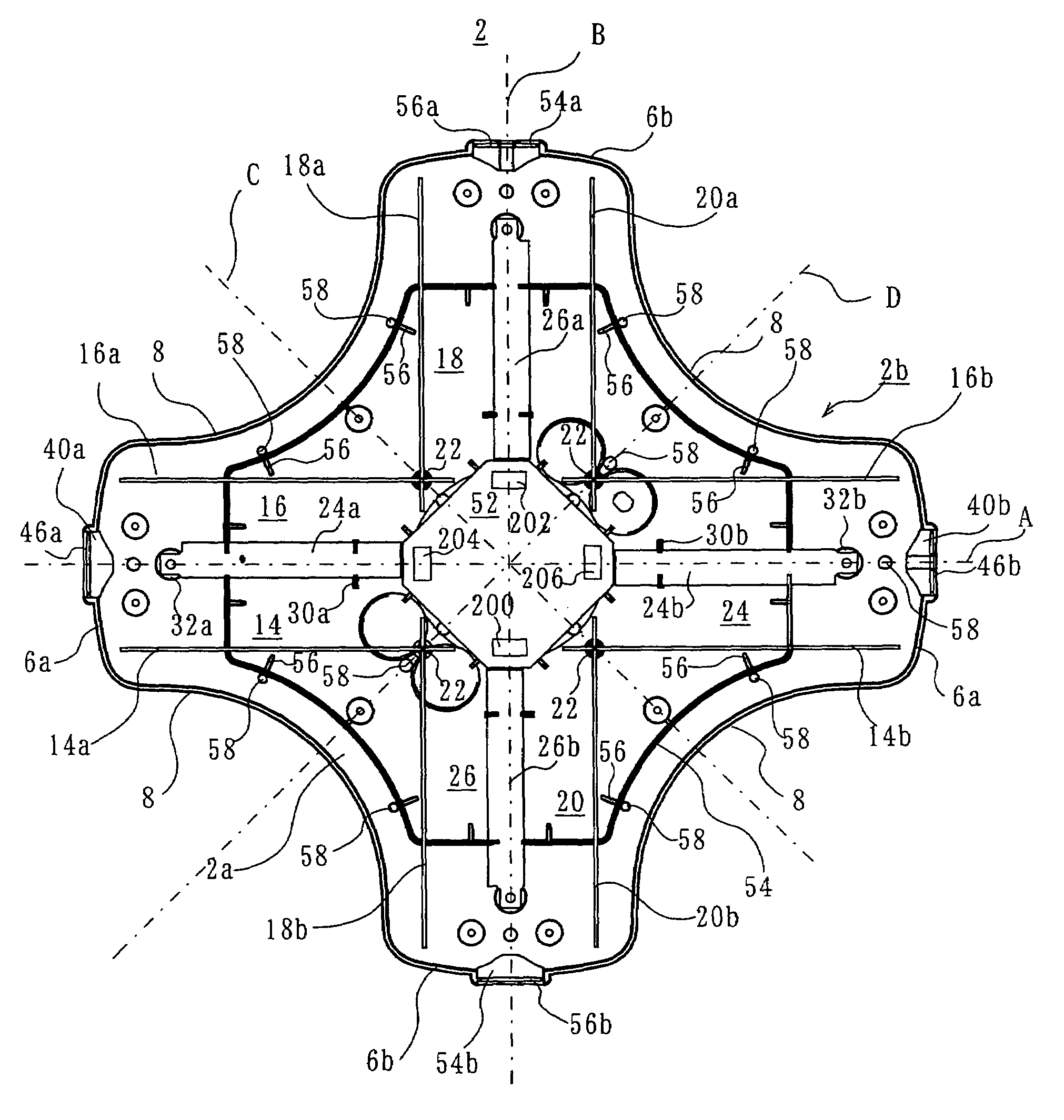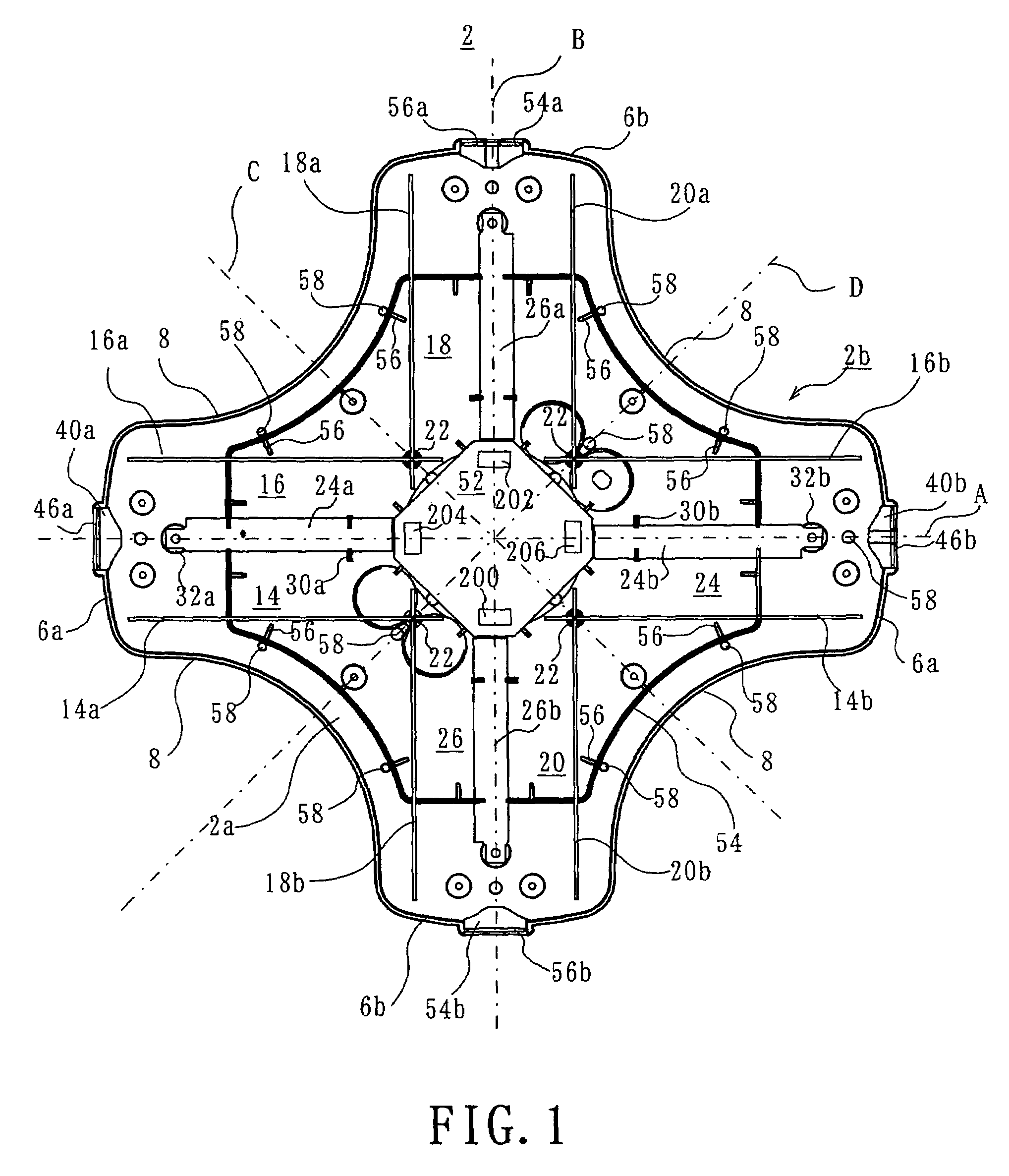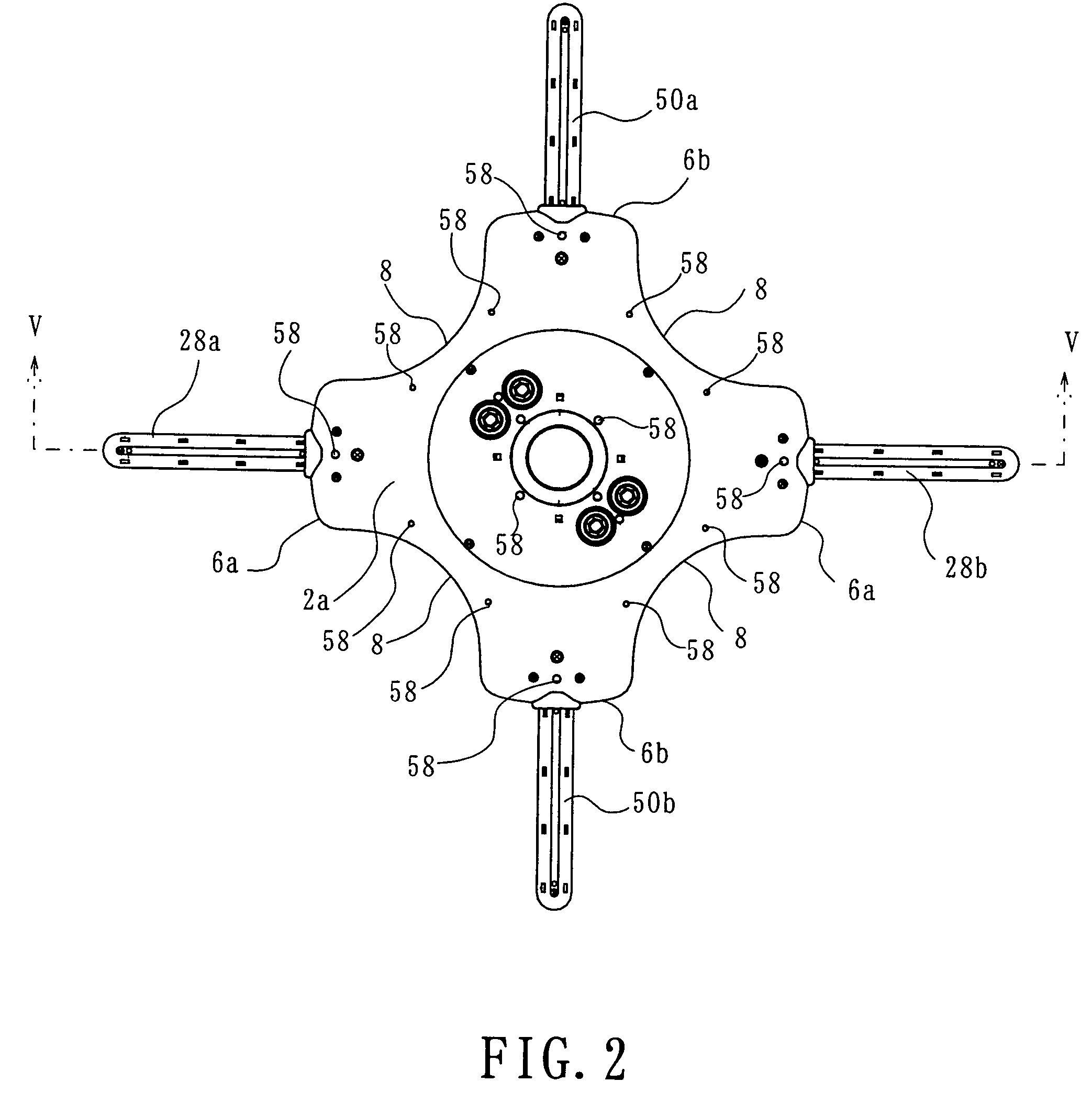Antenna apparatus
a technology of antenna arrays and antennas, applied in the field of antenna apparatuses, can solve the problems of low assembling efficiency and degrade assembling efficiency, and achieve the effect of simple structure and high efficiency
- Summary
- Abstract
- Description
- Claims
- Application Information
AI Technical Summary
Benefits of technology
Problems solved by technology
Method used
Image
Examples
Embodiment Construction
[0026]Referring to FIG. 3, an antenna apparatus according to the present invention includes a casing 1. The casing 1 is formed of a main body 2 and a lid 4. The main body 2 is formed of, for example, a synthetic resin, and has a generally octagonal shape in plan. The inner bottom surface of the casing 1 slopes downward from the peripheral portion toward the center, and is open at one side, e.g. upper side. The opening is closed by the lid 4, which is also octagonal in plan. The lid 4, too, is formed of a synthetic resin, for example, and slopes upward from its peripheral portion toward the center.
[0027]The main body 2 has a bottom wall 2a and a peripheral wall 2b extending along the periphery of the bottom wall 2a, as shown in FIG. 1. As shown in FIGS. 2, 3 and 4, the peripheral wall 2b includes a pair of spaced-apart ends 6a, 6a, and also a pair of spaced-apart ends 6b, 6b. The line connecting the ends 6a and 6a orthogonally intersects the line connecting the ends 6b and 6b. Arcuat...
PUM
 Login to View More
Login to View More Abstract
Description
Claims
Application Information
 Login to View More
Login to View More - R&D
- Intellectual Property
- Life Sciences
- Materials
- Tech Scout
- Unparalleled Data Quality
- Higher Quality Content
- 60% Fewer Hallucinations
Browse by: Latest US Patents, China's latest patents, Technical Efficacy Thesaurus, Application Domain, Technology Topic, Popular Technical Reports.
© 2025 PatSnap. All rights reserved.Legal|Privacy policy|Modern Slavery Act Transparency Statement|Sitemap|About US| Contact US: help@patsnap.com



